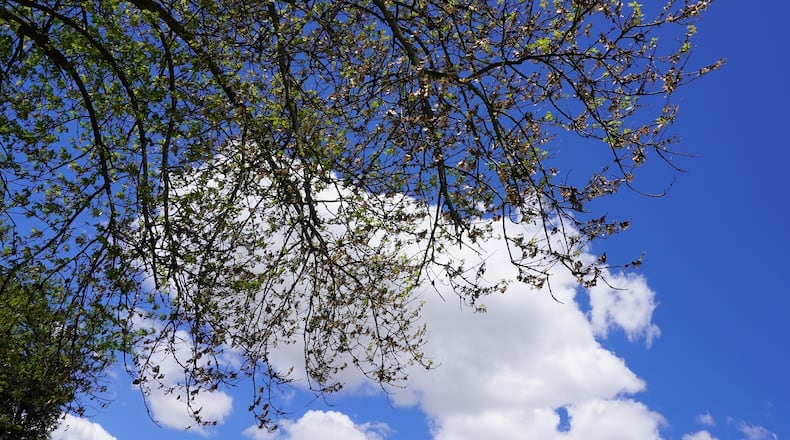Maple fruits are called samaras. Two achenes, containing the actual seeds, are connected in the center of the fibrous papery tissue. Their shape is perfect for seed dispersal. As they fall from trees, they float and fly like helicopters.
Last Saturday, while spreading mulch in the garden, the wind was blowing. Suddenly there was a big, sustained gust of wind that released the helicopters.
My entire front yard was filled with the flittering, fluttering fruits of the neighbor’s silver maple. Ugh. It truly looked like giant snowflakes falling.
The reason I say ugh is because these fruits mature in a single season. This means that they will sprout this season given the right conditions. Those conditions are easily found in flower beds, in lawns that might be thin or have bare spots, and even in rain gutters.
I suspect in a few weeks I will be getting questions on how to get rid of all the maple trees coming up in lawns and gardens.
In the lawn, just keep mowing them and eventually they will die as they expend their food source to grow. In the flower beds and vegetable gardens, you will have to pull them. Do this now before they really take root.
Let’s get to why there were so many of them this season.
Maples bloom around the end of February and early March. Do you recall the weather at that time? It was nicer than we have had these last few weeks. And there were no freezing temperatures.
This allowed for the flowers to be pollinated by the wind and fertilized. This led to the many fruits that you see on trees.
In many cases, you see more fruits than you see leaves. I have seen some trees that have a few branches full of leaves and the rest of the tree is fruits.
Because of the heavy fruit load, the leaves are slow to emerge. Don’t worry about this, once these fruits fall, the leaves will fill out as they normally do.
The challenge is that these fruits are everywhere and there is a chance that a large percentage of them germinate. This is what causes the headaches.
On a positive note, perhaps we are heading into warmer temperatures and thus time to plant annuals and vegetables without the worry of frost. But then again, the way Ohio weather goes, who knows!
Just remember — don’t work in wet soil. You will be sorry later in the season if you do.
Pamela Corle-Bennett is the state master gardener volunteer coordinator and horticulture educator for Ohio State University Extension. Contact her by email at bennett.27@osu.edu.
About the Author


